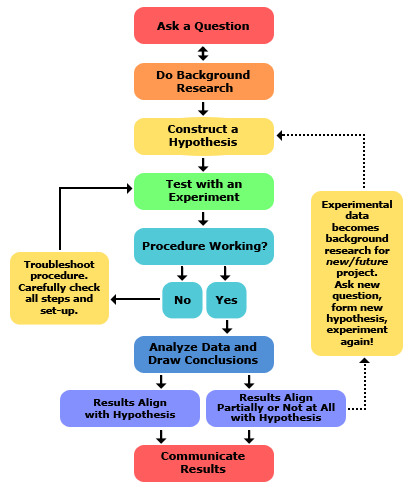 There are many ingrained beliefs and references to generosity in the various religious texts. Bible - ‘It is more blessed to give than to receive.’ Torah - 8 levels of charity, one of the highest being "give to the poor without knowing to whom one gives, and without the recipient knowing from who he received" Buddhists practice giving (dana) - True dana arises from the intention underlying the act of giving. It is not that you are supposed to have only pure motives but rather that your intention is to cultivate purity of generosity without self-consideration. But Religion aside, it just feels right to be generous, you don't actually need anyone to tell you that it is a good thing to practice. This is a big subject and can be over-complicated, but to cut through that a nice summary is... Benefits of generosity to your children:
How can children be taught to practice generosity? The hack .. Be a role-model: give freely, using these as a few ways to show how generous you can be - all without expecting anything in return.
The most important act of generosity
When children see you acting out of generosity, they will quickly catch on. When you know they have been generous, ask them how it felt afterwards. Ask them how it might have felt for the recipient. Would it have felt different for either of them if they did not know each other? How did it feel not wanting or needing anything in return? With the recent tragic and awful events in Paris highlighting the capacity for humans to be brainwashed and agitated to the point of committing heinous acts against fellow human beings I could not help but think about how to bring up children in a way that opens their mind to reason. I thought about how to teach a child to reason for themselves, test and draw their own conclusions while considering all the available information and evidence. How to do this? The Scientific Method comes to mind.. To paraphrase Richard Feyneman: "A scientist is never certain. We all know that. We know that all our statements are approximate statements with different degrees of certainty; that when a statement is made, the question is not whether it is true or false but rather how likely it is to be true or false." "‘Does God exist?’ When put in the questional form, ‘how likely is it?’ It makes such a terrifying transformation of the religious point of view, and that is why the religious point of view is unscientific. We must discuss each question within the uncertainties that are allowed." Brilliant, elegant, simple, and very dangerous to the bigots of the world that want to push dogmatic doctrines on a docile and unthinking population. I found a great little overview of the Scientific Method that shows how we could gently introduce our kids to a way of independently forming an opinion that could be justified. 6 Simplified Steps of the Scientific Method.. 1. Ask a Question: The scientific method starts when you ask a question about something that you observe: How, What, When, Who, Which, Why, or Where? 2. Do Background Research: Rather than starting from scratch in putting together a plan for answering your question, you want to be a savvy scientist using library and Internet research to help you find the best way to do things and insure that you don't repeat mistakes from the past. 3. Construct a Hypothesis: A hypothesis is an educated guess about how things work: "If _____[I do this] _____, then _____[this]_____ will happen." 4. Test Your Hypothesis by Doing an Experiment: Your experiment tests whether your hypothesis is supported or not. It is important for your experiment to be a fair test. You conduct a fair test by making sure that you change only one factor at a time while keeping all other conditions the same. This can be as simple as considering a point of view, and then probing it from different viewpoints. 5. Analyze Your Findings and Draw a Conclusion: Once your experiment is complete, you collect your measurements and analyze them to see if they support your hypothesis or not. 6. Communicate Your Results: To complete your investigative project you will communicate your results to others in a final report and/or a display board - or even better - over dinner with your family! Dinner conversation. What to talk about .. How are you? What did you do today? Eat your broccoli!
How about we hack dinner conversation. Why not introduce a meaningful aspect to what you can talk about? Here are some starters. - Did you help someone today? - What selfless act did you do today - without expecting anything in return? - What question have you been thinking about asking us but you haven't? - Tell me 5 awesome things about ..... and 5 not so awesome things about the same thing - What great discovery can you share with me today? - If you had $10 to help someone - how would you help them? - Did you say something today that you wish you didn't? - Is there something you wish you had already done by now?  Mental toughness is a collection of attributes that allow a person to persevere through difficult circumstances (such as difficult training or difficult competitive situations in games) and emerge without losing confidence. It is keeping strong in the face of adversity. The ability to take a deep breath, immerse ourselves in the experience whether we like it or not, and start doing what really needs to be done. Like anything this is an aquired skill. It takes practice - consciencious practice, and in a way is self-reinforcing. Wanting to develop mental toughness will take a little bit of mental toughness. How do we do this? By being in the moment. Resolve right now, right in the moment, that you are going to do it. Whatever it is that your self doubting brain is telling you - just get on and do it. Make a start, do the next step, take a bit of action. Whaever it is that just beat you, whatever it is that your brain is telling you will beat you - that it cannot be done .. Take a step towards it, disempower it, take back control. It can also mean that you stop listening to the doubters, the peoplpe bringing you down. Take a step to ignore them, allow yourself the freedom to be who you are, to be a person of action and control and determination. Then allow yourself to feel good about it. Why not? Its considered the number one trait of successful entrepeneurs - the number one determining factor of those people that rise above everyone else, make a success. Wouldnt that be an awesome gift to teach your child? How can we cultivate this in children? Let them know that not everything will go their way. Life throws you curve balls and will knock them down. It happens to everyone. Just knowing this, and being mindful of it can and will give your child a sense of strength - its OK that things go against you, not everything is perfect. What is important, and what truly distinguishes successful people is their ability to deal with adversity. There are any number of parables and fairy tales you can relate to your child to show this. The classic Disney story is one of adversity, perserverance and a degree of mental toughness that allows the protagonist (hero) to get back up after being knocked down. The Hack. Look for moments where your child faces adversity. Look for moments where you just know that things may not exactly go the way they want. Prepare them for it, let them know you support them and that its OK for things to not go their way. Then, when it inevitably happens and they feel miserable and like quitting, practice mental toughness with them. - Do the hard thing again. - Confront the fear again - Get up, dust off, try another approach - Take some action so that next time it may be easier And most importantly - give your child feedback that you are proud of their resilience. You are proud of whenever they take a fall, make a mistake, get beaten, don't win, proud of when they take all that and then try again. |
Mission:Always on the lookout for the ultimate Kid Hacks Archives
November 2016
Categories
All
|


 RSS Feed
RSS Feed